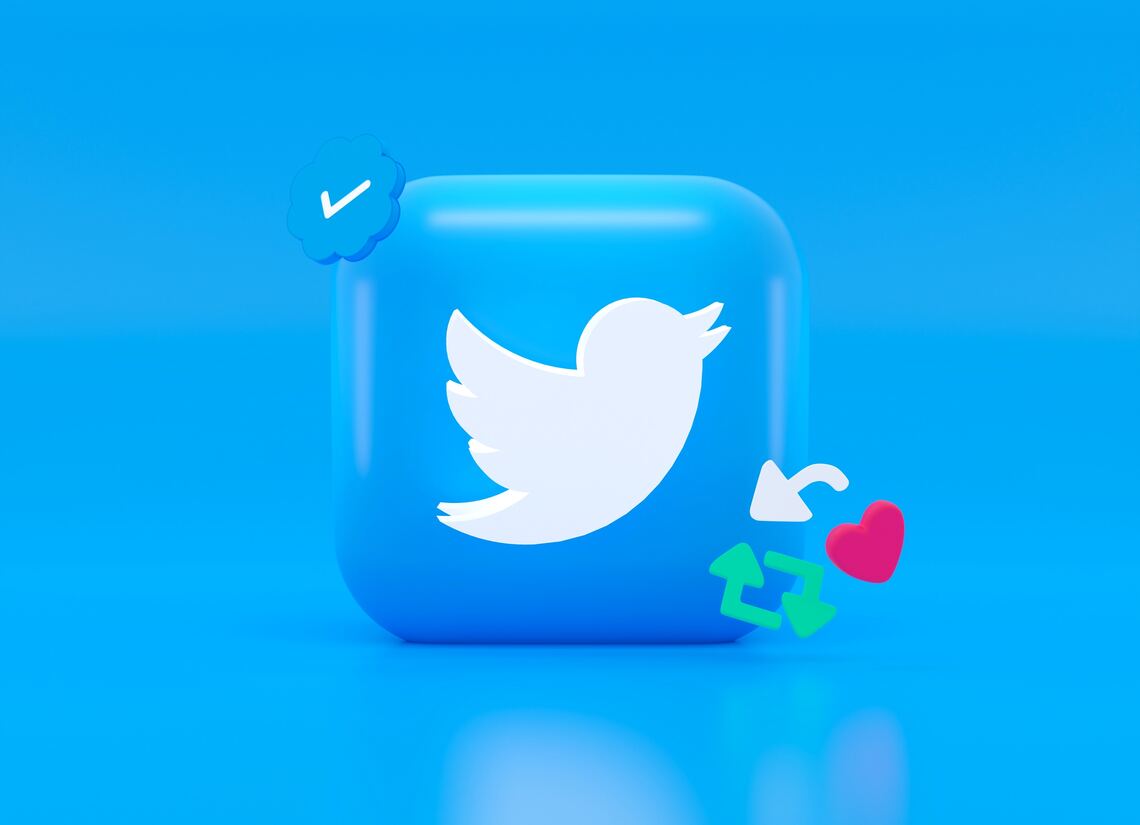Introduction to Twitter Automation
Did you know that over 500 million tweets are sent every day?
With such a huge number of content, it's no wonder that social media marketers are considering Twitter automation to help them manage their accounts and maximize their impact.
Twitter automation involves using specialized tools and techniques to automate various tasks, such as scheduling tweets, following and unfollowing accounts, and monitoring mentions and hashtags.
Through this article, we'll dive into the world of Twitter automation, exploring its purpose, the tools and techniques involved, and the advantages and disadvantages of using such automation.
What is Twitter Automation?
Twitter automation refers to the use of tools and software to perform operations such as scheduling tweets, retweeting, liking, and following/unfollowing people. on your behalf.
Twitter automation refers to the use of software or tools to automate certain tasks and activities on the Twitter platform.
Twitter automation involves using various tools and techniques to streamline and automate tasks related to managing your Twitter account and can be used for various purposes, including social media marketing, brand management, content distribution, and audience engagement.
Some popular Twitter automation tools and techniques include:
- Scheduling apps: Tools like Sanka, Buffer, and TweetDeck allow you to schedule tweets in advance, ensuring that your account remains active and consistent even when you're not online.
- Chatbots: Chatbots can be programmed to automatically respond to direct messages or mentions, providing quick and efficient customer service or engagement.
- RSS feeds: By connecting your blog or website's RSS feed to your Twitter account, you can automatically share new content as it's published.
These solutions help you save time and effort while providing regular content to your audience.
Why Use Twitter Automation?
Twitter automation offers several benefits that can help social media marketers improve their efficiency, consistency, and scalability. Some of the advantages of using Twitter automation include:
- Increased efficiency: By automating certain tasks, such as scheduling tweets or monitoring hashtags, marketers can save time and focus on more strategic activities, like content creation and community engagement.
- Consistency: Automation ensures that your Twitter account remains active and consistent, even when you're not online. This is crucial for building a strong brand presence and maintaining a loyal following.
- Scalability: As your Twitter account grows, automation can help you manage an increasing number of tasks and interactions without becoming overwhelmed.
Some examples of tasks that can be automated include:
- Scheduling tweets to be published at specific times or intervals
- Automatically following back new followers
- Unfollowing accounts that don't follow you back
- Monitoring mentions of your brand or specific hashtags
The Cons of Twitter Automation
While Twitter automation offers numerous benefits, it's essential to be aware of the potential risks and pitfalls. Some of the disadvantages of using Twitter automation include:
- Lack of Authenticity: One of the biggest drawbacks of Twitter automation is that it can make your account seem less authentic and lack of personal touch.
- Risk of Spamming: Automated tweets can also be seen as spam, especially if they are repetitive or irrelevant to your audience, which potentially harms your potential followers and damages your reputation on Twitter.
- Limited Engagement: While automation can save you time, it can also limit your engagement with your audience as messages and replies may not address the specific or personal concerns of your followers, which can lead to a lack of ‘human’ engagement and interaction.
To avoid these risks and maintain a human touch in your automated Twitter activities, consider the following tips:
- Use automation sparingly and strategically, focusing on tasks that genuinely benefit from automation, such as scheduling tweets or monitoring hashtags.
- Always prioritize engagement and authenticity, taking the time to interact with your followers and respond to their questions and comments personally.
- Regularly review and adjust your automation strategy to ensure that it aligns with your brand values and audience expectations.
How to Automate Your Twitter Strategy

To get the most out of Twitter for your marketing, you’ve got to automate.
Manually tweeting, following, and engaging with your target audience simply won’t scale.
The good news is, with a few simple tools, you can put your Twitter strategy on autopilot.
First, choose a social media management tool to schedule your tweets in advance.
This allows you to draft tweets when you have time, then space them out over the week. You’ll want to schedule a combination of:
- Your own content: blog posts, videos, podcast episodes, etc.
- Curated industry news and insights
- Engaging questions to spark discussion
- Retweets of influencers and media mentions
Next, set up saved searches and streams to monitor industry conversations and engage with your target audience.
Respond to people talking about your products, services or industry topics. This shows you’re listening and builds goodwill.
You should also follow industry influencers, media, and thought leaders. But don’t just follow blindly - engage with them by liking and retweeting their posts, and replying to start a genuine conversation. Over time, many will follow you back.
Finally, consider using a service like Followerwonk to automatically follow targeted accounts that follow your competitors or industry leaders.
Be sure to unfollow non-engagers to keep your following number in balance.
With the right tools and techniques handling the heavy lifting, you can focus your efforts on engagement and relationship building. And that, my friends, is the key to social media success.
Finding and Engaging With Your Target Audience
Finding and engaging with your target B2B audience on Twitter requires focus and consistency.
Identify your ideal customers.
Think about the types of businesses that would benefit most from your product or service. Are they small companies or large enterprises? In what industries do they operate?
Once you have a clear picture of your target audience, search Twitter for people and brands that match this profile. Follow them and start engaging by liking and commenting on their tweets.
Build your follower base.
Gaining followers who are genuinely interested in your content and product takes time and effort. Here are a few tips to build your audience:
-
Post valuable content like blog posts, case studies, infographics, and videos that provides useful information for your target audience. Share this content on Twitter and promote engagement by asking questions and starting discussions.
-
Follow people who follow your competitors and industry influencers. Many will follow you back.
-
Engage with people by liking and commenting on their tweets. Be authentic and thoughtful with your comments.
-
Use hashtags to make your tweets more discoverable. Research popular hashtags in your industry and include them when relevant.
Engage, engage, engage.
-
Once you have followers, keep them engaged by tweeting regularly about things that interest them. Share a mix of your own content, industry news, insights, and questions.
-
Respond to people who engage with your tweets. Thank them for likes and comments, answer any questions, and join the conversation.
-
Tag other Twitter users in your tweets and invite them to join the discussion. This personal outreach can lead to new followers and connections.
-
Run contests and giveaways that encourage people to engage with your tweets. Offer promotions and discounts exclusive to your Twitter followers.
-
Use Twitter analytics to see which types of tweets and content get the most engagement. Then do more of what's working!
With consistency and by providing value to your target audience, you'll build a following of loyal customers and connections on Twitter. Keep engaging with them, and they'll become your best advocates and a source for new business.
Creating Share-Worthy Content for Twitter

Creating content that sparks interest and engagement is key to successful Twitter automation. To get the most out of your Twitter efforts, focus on crafting share-worthy content.
Post Valuable Insights
Share insights, tips, and advice that provide value to your followers. For example, compile key industry statistics, trends, or reports into an infographic.
Curate and comment on the latest news and developments in your industry. Offer useful how-tos, best practices, or step-by-step guides. Valuable content will resonate most with your audience.
Use Visuals
Tweets with images get 150% more retweets than tweets without. Include eye-catching photos, graphics, memes, GIFs, or videos.
Visual content is more engaging and helps to quickly capture attention. Just be sure any images you use are high quality and properly sized for Twitter.
Ask Questions
Pose interesting questions to your followers to spark discussion and increase engagement. For example, ask about their biggest challenges in your industry or what they'd like to see more of from your company.
Questions are an easy way to start a conversation and gain valuable insights into your audience's needs and interests.
Share Curated Content
Don't just promote your own content. Share industry news, articles, blog posts, videos, and other media from influencers and thought leaders in your space.
Curating and commenting on the best third-party content shows your followers you have your finger on the pulse of what's happening in your industry.
It also helps to establish you as a go-to source for the latest information and trends.
Use Hashtags
Hashtags make your tweets more discoverable to those interested in a particular topic or industry. Include relevant hashtags, especially those that are trending, to increase visibility and reach new potential followers.
But don't overdo it—stick to 1 or 2 hashtags per tweet for the best results.
Following these best practices will help you create share-worthy content that sparks engagement and fuels your Twitter automation success.
Keep tweaking and improving your content over time based on what resonates most with your followers.
Types of Twitter Automation

Twitter automation can be broken down into different types, each with its specific purpose and benefits:
Content Scheduling
This type of automation involves scheduling and publishing tweets at predefined times or intervals. This ensures a consistent flow of content and can help you pre-plan marketing campaigns that coincide with product releases or industry events.
Auto Liking, Retweeting, and Replying
Automating these types of interactions can help you engage with relevant content and promote your brand to a broader audience. These tools can be configured to retweet, like or reply based on specific keywords, hashtags, or user accounts.
Auto Following and Unfollowing
This automation type involves automatically following and unfollowing accounts based on specific criteria, such as certain keywords or industry niches. By doing this, you can expand your network and increase the chance of being followed back by accounts with similar interests.
Analytics and Reporting
Automation tools with built-in analytics can provide you with valuable insights about your Twitter account's performance. This data can help inform your marketing strategies and ensure that your content resonates with your target audience.
Choosing the Right Twitter Automation Tool
With a plenty of Twitter automation tools available, it's essential to choose the right one that aligns with your goals and needs:
Features
Ensure the tool you choose offers the automation features you need. From content scheduling to auto-engaging, every tool has unique features that cater to specific requirements.
Ease of Use
User-friendly interfaces and simple navigation are crucial factors in selecting an automation tool. You don't want to waste time struggling with a complex tool that hampers your productivity.
Pricing
Consider the costs associated with the automation tool. Some tools have free plans with limited features, while others offer premium plans with advanced features and customer support.
Integrations
Choose a tool that integrates seamlessly with other marketing platforms and tools you already use. This will make managing your social media campaigns more convenient.
Introducing Sanka: A Twitter Automation Tool
Sanka is an excellent choice for fulfilling your Twitter automation needs efficiently. It offers a wide range of features, from content scheduling to auto-engagement and analytics.
Sanka's user-friendly interface makes it easy to navigate and manage your Twitter account. With competitive pricing plans and seamless integration with other marketing tools, Sanka can help you optimize your Twitter presence and reach a wider audience while saving time and effort.
Conclusion
So there you have it, the keys to mastering Twitter automation for your marketing success.
Start with a solid strategy, choose an automation tool that fits your needs, create engaging content, build relationships, and analyze your results.
While it may seem overwhelming, taking it step by step and staying consistent will help you gain traction.
Don't be afraid to experiment - you'll find what works for your brand and audience.
The rewards of increased brand awareness, new leads, and sales opportunities will make the effort worthwhile.
Keep learning, stay up to date with changes, and continue optimizing your approach. Before you know it, you'll be a Twitter automation pro!
Consider using Sanka for your Twitter automation needs and experience the benefits for yourself.








